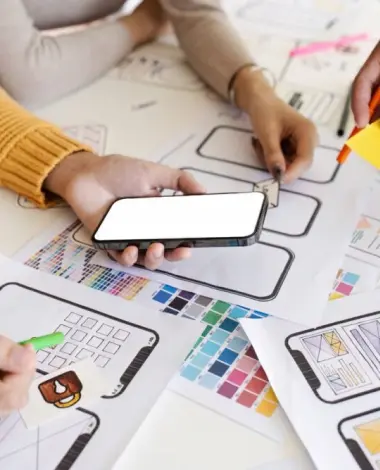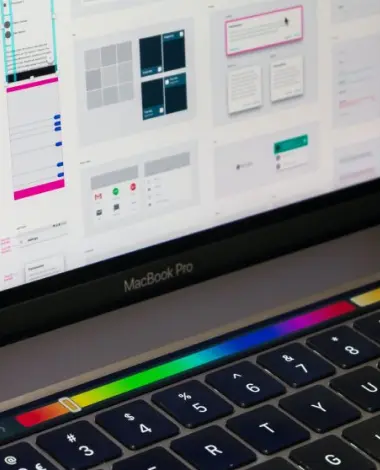In stark contrast to earlier generations of would-be car-owners, today’s buyers might spend upwards of 10 to 15 hours researching online before setting foot in a dealership. This shift highlights a fundamental change in consumer behaviour—one largely driven by digital technology. As a 2023 S&P Global Mobility article says: “The conventional ‘convenience’ metric needs to be redefined—it’s no longer convenient having to drive to a dealership.”
Digital Transformation in the automotive industry, as in many others, refers to the integration of digital technologies into all business areas. This article focuses on how Digital Transformation (DT) is reshaping the critically important pre-purchase phase of the car buying process: The period of research, consideration, and evaluation that comes before a purchase decision is made.
Enhancing this phase through digital tools is becoming essential for customer acquisition, building long-term brand value, and cultivating brand loyalty. It directly addresses the modern customer’s need for an informed, convenient, and personalised experience.
The Evolved Customer: New Expectations in a Digital World
The traditional, linear path to purchasing a vehicle has made way for a new landscape of customer expectations. Understanding these expectations is the first step for any automotive brand in navigating its DT journey.
The empowered buyer proactively seeks information across multiple online channels—manufacturer websites, review sites, forums, and social media—rather than passively receiving it at a dealership. Opinions on social media heavily influence their consideration set.
The demand for personalised information and experiences is concurrent with this empowerment. Customers increasingly expect brands to understand their individual needs and preferences—and then to deliver tailored information, relevant vehicle recommendations, and experiences that go beyond generic, mass-market approaches.
In a 2021 CitNOW survey of 1,000 UK motorists, for instance, 72% of respondents under 45 said they would be more likely to purchase if they received a personalised video of a vehicle. A 2023 Acxiom study that surveyed 1,500+ US car owners found that the level of personalisation experienced in the process of buying a car would—for 74% of respondents—influence which brand they chose next time.
Then, the desire for immersive understanding is growing; static images and specification sheets are insufficient. Potential buyers want to visualise vehicles in their own context, explore interiors and features intimately, and gain a deeper sense of the product remotely—all well before committing to physical interactions.
And of course, the expectation of seamlessness is paramount. Customers demand smooth, logical transitions as they move between online research, mobile interactions, and potential offline experiences like showroom visits or test drives. Any friction or disconnect in the car-buying journey can lead to frustration and abandonment. In the Acxiom study we mentioned, 31% of respondents said the seamlessness of their last vehicle purchase experience influenced the purchase; 34% said they would have bought a different car if the experience had promised to be more seamless and personalised.
Digital Transformation in the automotive industry is helping meet these expectations and power the seamless, personalised journey described above. Brands are implementing a range of DT strategies that focus on leveraging AI and data, creating immersive virtual experiences, and integrating digital tools into the physical showroom environment.
AI and Data-Driven Personalisation
Artificial Intelligence (AI) and data analytics are central to delivering the personalised experiences modern buyers demand.
By carefully utilising customer data—gleaned (ethically) from browsing behaviour, search queries, configured vehicles, and customer profiles—brands can generate predictive insights into individual needs and preferences. This enables the implementation of AI algorithms that offer personalised vehicle recommendations and configuration guidance, matching suggestions to stated or inferred customer requirements far more effectively than traditional methods can.
Then, AI-powered chatbots and virtual assistants on websites and apps provide instant, 24/7 responses to customer queries; they handle initial information requests and guide users through basic customisation steps.
AI is also enhancing vehicle discovery through sophisticated search tools that allow natural language queries (“Show me fuel-efficient SUVs safe for families”) and receive intelligent comparisons between models and trim levels.
Critically, analytics capabilities allow brands to continually monitor the effectiveness of their AI tools. Brands can track customer interactions across digital channels, optimise website content and marketing campaigns for better engagement and conversion, and ensure the right message reaches the right customer through the most effective channel.
Creating Immersive Digital Experiences
Brands are investing in immersive technologies towards addressing customers’ need for a deeper understanding before physical engagement.
Virtual car showrooms online allow for convenient simulations of showroom visits. They provide interactive, 360-degree views of vehicle interiors and exteriors. Customers can explore cabins, examine features, and get a realistic feel for the vehicle’s design and space.
Augmented Reality (AR) applications, typically on smartphones or tablets, bridge the digital and physical worlds for vehicle evaluation. A customer can activate AR in a brand’s app and point their camera at their garage, for instance—after which the app superimposes a true-to-scale 3D model of a configured car over photographs or videos of the garage created using the camera. The customer can then see how different colours, wheels, or accessories look in a real-world setting. They can walk around the virtual vehicle, view it from multiple angles anchored in their space, and often interactively change colours or options directly from the AR view.
Such capabilities are crucially important because they help customers visualise configurations under real-world lighting and accurately assess a vehicle’s size and fit in familiar surroundings. AR can overlay information on top of a virtual view, about specific features—which greatly aids confident decision-making.
Virtual Reality (VR) test drive simulations offer even more sophisticated pre-purchase assessment. Using VR headsets, potential buyers can experience the vehicle’s interior layout, dashboard ergonomics, and even “sit” in the driver’s seat and experience the car’s features and handling. This helps compare different models or features efficiently in the early stages of consideration.
Integrating Digital into the Physical Showroom
Carrying on from the online world, DT in the industry extends to transforming the traditional dealership experience itself—aiming for that crucial seamlessness between online and offline.
Bridging the customer’s online research with their in-person visit is essential. By accessing a customer’s saved configurations or expressed preferences, showroom staff can provide a personalised welcome and tailor the consultation—which avoids the need for repetition and demonstrates preparedness.
Interactive digital displays and kiosks are becoming commonplace. Customers use them to independently explore detailed specifications, compare models side-by-side, view multimedia content, and access reviews—all of which supplement the information provided by sales staff.
The test drive experience is being enhanced with AR overlays, which offer real-time visual feature information to make the drive more informative. They are visible through the car’s Head-Up Display (HUD) or a paired app on a smartphone or tablet.
Digital feedback is gathered after the drive—through surveys on tablets, for instance—for analysis and follow-up based on the customer’s immediate impressions.
Sales staff equipped with tablets and dedicated digital tools can instantly access inventory, detailed specs, customer history, configuration tools, and real-time financing or trade-in information for a more knowledgeable, more personalised consultation.
Streamlining Towards Purchase: Digital Facilitation
After enhanced research, discovery, and evaluation, Digital Transformation in automotive focuses on tools that streamline the stages of the car buying process that lead to ownership. Such streamlining matches customer expectations of a smooth end-to-end purchase experience.
Digitally-Enabled Transactions: The often cumbersome processes of financing and paperwork are prime candidates for digital facilitation.
Many manufacturers and their finance partners now offer online financing applications, which allow customers to get pre-approved financing or explore payment options remotely—and save time during the dealership visit. Digital payment options for deposits or related services further streamline the process.
Facilitating online or digital document review and e-signing capabilities enables customers to handle much of the necessary paperwork at their convenience. Apart from reducing the time spent on administrative tasks in the showroom, such facilitation enhances transparency.
Customisation and Handover: Digital tools continue to add value even as the purchase is finalised and the vehicle is delivered.
AR visualisation tools can extend to visualising final accessory additions or confirming chosen configurations.
Vehicle handover itself is enhanced through digital means. Bulky paper packages are replaced by accessible digital manuals, electronic documentation, and personalised video tutorials that explain vehicle features.
The dealership can enable a smooth transition into ownership by digitally linking the vehicle, usually through its Vehicle Identification Number (VIN), to the customer’s account with the automotive brand. This allows for customer-specific activation of the car’s connected features. The customer can then use the brand’s app to remotely lock or unlock doors, check fuel level or EV charge status, send navigation destinations to the car’s system, and access vehicle health reports.
Essentially, digital linking ensures that a car’s connectivity features and digital services are tied to the customer’s profile and ready to use immediately upon ownership.
Strategic Implications and Outlook
The outcomes—in the pre-purchase phase—of digital transformation in automotive carry strategic weight.
In the broad context of DT, the strategic imperative is clear: A cohesive, customer-centric digital strategy that replaces piecemeal implementation of digital tools. Success demands an integrated approach that can deliver a seamless, personalised journey across all touchpoints: An approach that recognises DT as fundamental to business operations.
Investing in an enhanced pre-purchase customer experience through DT yields tangible long-term value creation. By meeting the expectations of convenience, personalisation and transparency early on, brands can drive the kind of customer satisfaction that leads to increased loyalty, repeat business, positive word-of-mouth, and stronger overall brand equity in a competitive market.
Along the DT journey in automotive retail, emerging trends include evolving AR applications and more sophisticated AI for hyper-personalisation. There is also potential in integrations with metaverse platforms—shared virtual spaces where people interact through digital avatars—which increase the immersive nature of virtual car showrooms and virtual test drives.
In Conclusion
From the initial moments of online research and discovery, and through immersive virtual explorations and digitally integrated showroom visits, Digital Transformation in the automotive industry is enabling brands to deliver more personalised, efficient, and engaging journeys.
This evolution is dynamic and ongoing. The ability of the industry to consistently focus on the evolving needs of the customer—and balance technological innovation with human connection—will be critical for navigating the competitive landscape in the years to come.
References and Further Reading
Acxiom Research: Data-Driven Personalisation Transforms the Automotive Industry for Today’s Customer-Centric World (Business Wire)
Fuel for Thought: The Transformation of Auto Retail – Bricks, Clicks, and People (S&P Global Mobility)
How do consumers perceive in-car connectivity and digital services? (McKinsey & Company)
How OEMs and lenders can jump-start the stalled auto market (Genpact)
Metaverse beyond the hype: Multidisciplinary perspectives on emerging challenges, opportunities, and agenda for research, practice and policy (International Journal of Information Management)
Shopping for a Car Now Eats Up Nearly 15 Hours of Your Time, on Average (Money)
Social Media Redefining the Car-Buying Journey (Adtaxi)
The Automotive Industry in 2024 (Spyne)
The Impact of Virtual Reality in Car Showrooms: A 3D Visualisation Revolution (Easy Render)
The Ultimate Digital Customer Journey (CitNOW)
Table of Contents












